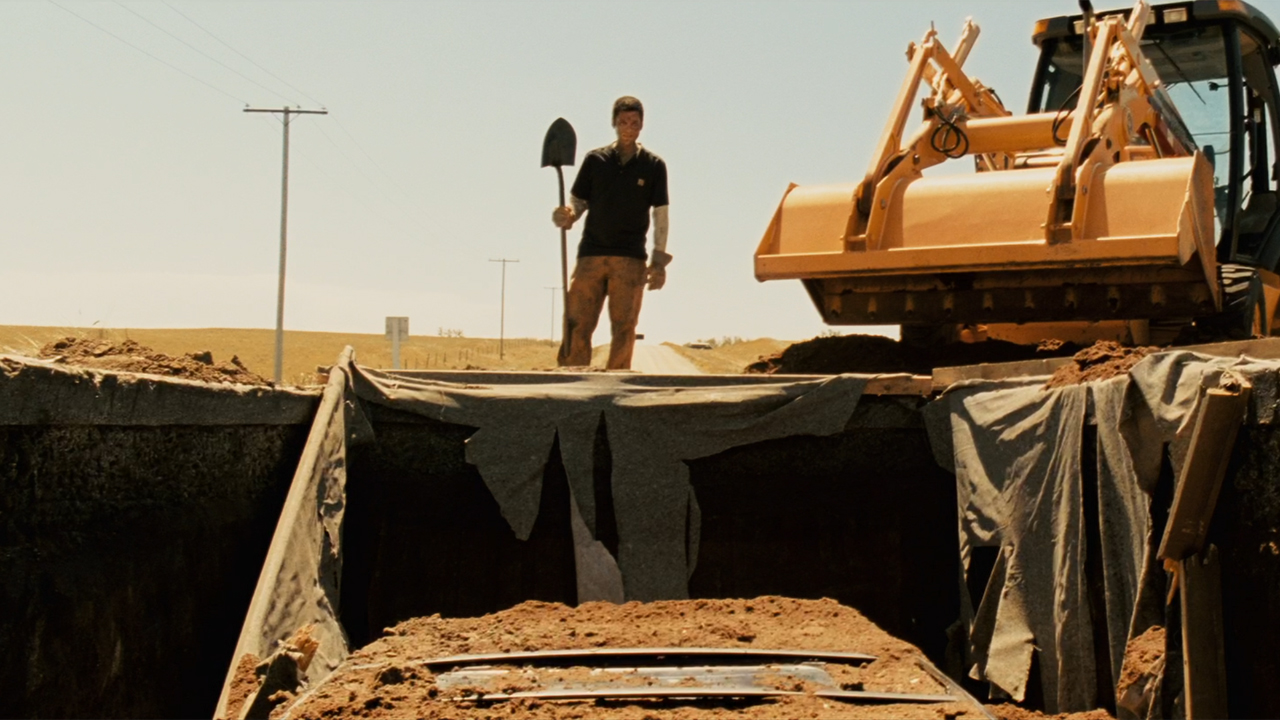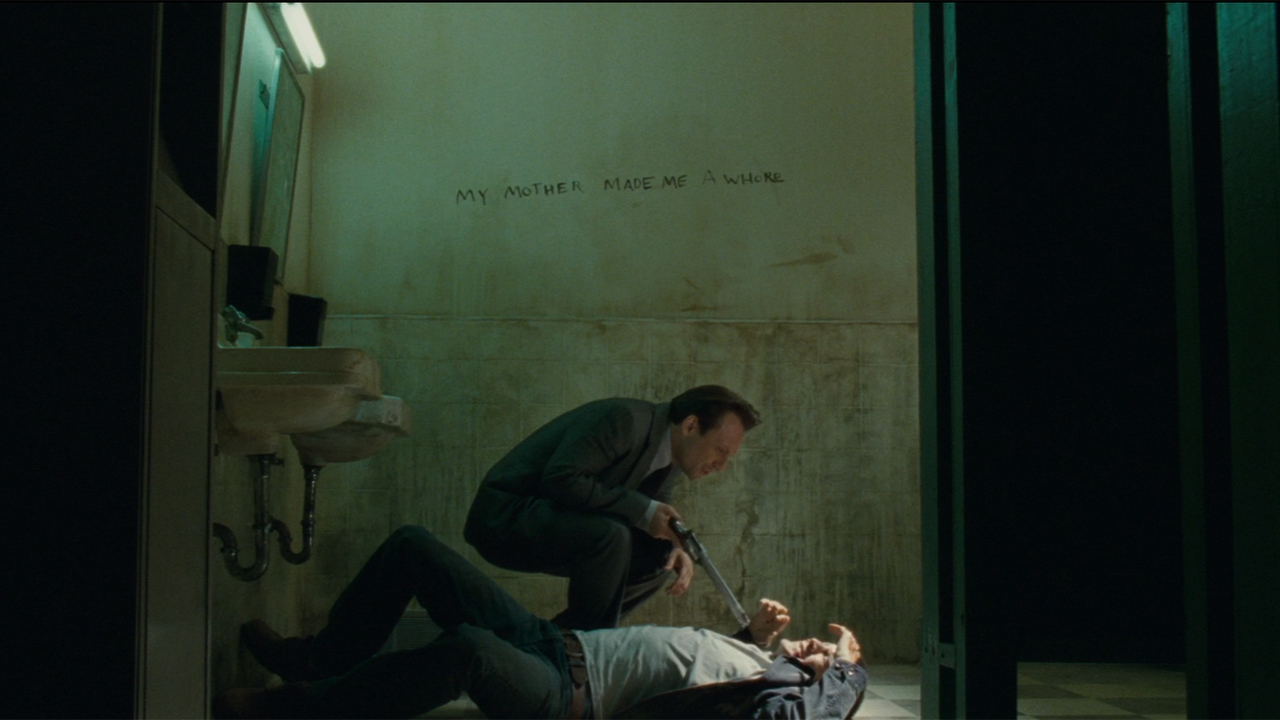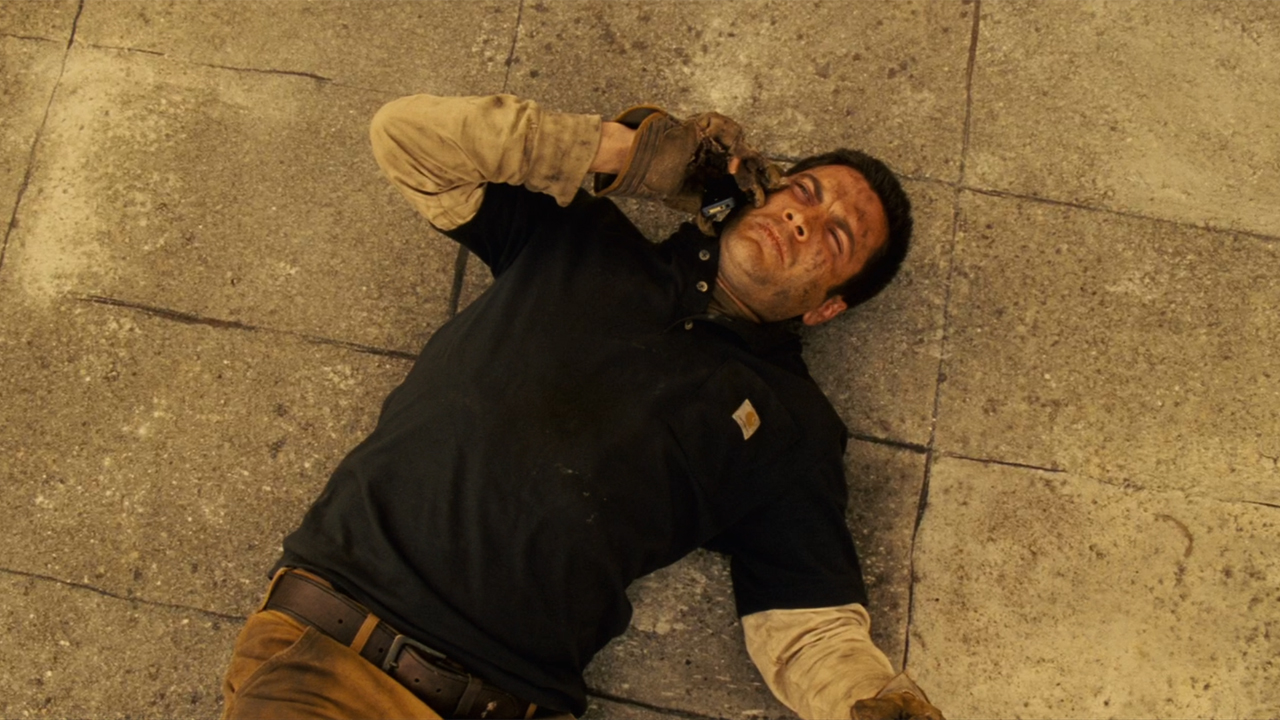Adapting Stephen King's Dolan's Cadillac: The 2010 Revenge Thriller Sees Christian Slater Buried Alive
Stephen King definitely comes up with some interesting ways to kill his characters.

There is a broad spectrum when it comes to the development time of Stephen King adaptations. Some projects are able to come together lightning quick – like John Carpenter’s Christine, which hit theaters just eight months after the 1983 novel arrived on bookstore shelves. Arguably the most notable title at the other extreme is The Stand, which spent 16 years in various forms of pre-production before becoming a miniseries in 1994, but Dolan’s Cadillac is another King project that had a devil of a time getting into principal photography.
Based on the novella of the same name, Dolan’s Cadillac’s journey through development hell can be traced back to February 2001 when it was reported that two big stars were attached to an adaptation set to be directed by up-and-coming director Stacy Title. Per The Hollywood Reporter (via ABC News), Kevin Bacon was negotiating to play the film’s protagonist, the mononymous Robinson, while Sylvester Stallone would play the eponymous, villainous Dolan.
The stars didn’t align on that iteration of the project, and Dolan’s Cadillac sat on a shelf for three years. It seemed like it might get a second life in April 2004 when Freddie Prinze Jr., speaking at the London premiere of Scooby Doo 2: Monsters Unleashed (via Lilja’s Library), revealed that he had signed on to be in the film opposite Gabriel Byrne… but that didn’t work out either, and by September 2005 it was reported that Stephen King had taken the rights back.
It wasn’t until the spring of 2008 that a new adaptation of Dolan’s Cadillac finally got some legs underneath it, specifically in the form of Wes Bentley and Christian Slater making deals to play the leads. The project still had to deal with behind-the-scenes issues, as director Erik Canuel was replaced by Jeff Beesley about a month prior to the start of filming, but the movie did get made.
After so many years of development, the adaptation of Dolan’s Cadillac never made it to theaters, having to settle for a DVD release in April 2010 – but can it at least be said that the juice was worth the squeeze quality wise? That’s the big question I’ll be answering in this week’s Adapting Stephen King.

What “Dolan’s Cadillac” Is About
Stephen King’s “Dolan’s Cadillac” – which can most easily be found in the 1993 collection Nightmares & Dreamscapes – owes a great deal to Edgar Allan Poe’s “The Cask of Amontillado.” Like that 19th century short story, it’s a prototypical revenge tale that sees the protagonist get satisfaction by entombing the individual who has wronged them.
As for specific inspiration, King credits the impetus to write the piece to a passing thought while stuck in traffic amid some road construction. He writes in the “Notes” section of Nightmares & Dreamscapes that he was stuck behind a “big green Cadillac Sedan DeVille,” and he observed that the massive car could actually fit in the excavated asphalt where some kind of large piping was being installed. The idea of embedding such a vehicle in a highway was too good an idea to shelve, and he quickly began developing a story around it.
Your Daily Blend of Entertainment News
Unfortunately, Stephen King ran into two significant roadblocks (pun intended) as he was creating “Dolan’s Cadillac.” The first was a matter of technical details, as he underestimated the knowledge of physics that would be required in order to pull off the plot point he was aiming to execute. The writer refers to himself as “an extremely lazy sod when it comes to research,” but fortunately he got assistance from his brother, Dave King – a child prodigy who inspired the genius character Howard Fornoy in the short story “The End Of The Whole Mess.”
King’s sibling not only gave him the required lessons about arc of descent, but even explained how the story’s protagonist could utilize machinery that is often left at roadwork sites.
The second roadblock “Dolan’s Cadillac” faced making its way to publication was Stephen King’s own early dissatisfaction with what he had written. Its new home became the cardboard box of “Bad Old Stuff” he keeps in what he refers to as the “Hallway of Doom” behind his office, but it only stayed there a few years. A request from a friend to publish something of King’s as a limited edition printing led him to dig out “Dolan’s Cadillac” and reevaluate it. He made some revisions to what he had written for that printing, and made more for its inclusion as the first story in Nightmares & Dreamscapes.
The aforementioned protagonist in the novella is Robinson: a school teacher who is well past losing it when he is first introduced, and only further continues to see his sanity unravel over the course of the story. His madness is driven by a man referred to only as Dolan: a powerful west coast crime lord who ordered that Robinson’s wife, Elizabeth, be killed after she witnessed him commit a crime and agreed to testify in court.
Robinson stalks Dolan for seven years trying to figure out how to get his revenge, the challenge being that the villain is always surrounded by two armed body guards and drives around in an armored Cadillac. Familiarizing himself with the criminal’s schedule – particularly his trips between Las Vegas and Los Angeles – the unhinged educator gets a job working for a Nevada roadwork crew so that he can ultimately execute a plan to build a fake detour trap for Dolan and bury him alive inside his own car.

How Jeff Beesley’s Dolan’s Cadillac Differs From Stephen King’s Novella
“Dolan’s Cadillac” sports a simple narrative told in the first person. Robinson tells his own experience from his own perspective in linear fashion – first vaguely recapping the circumstances that led to his wife’s death before recounting how he went about planting the titular vehicle below a highway stretching from Las Vegas to Los Angeles.
Jeff Beesley’s adaptation, written by Kingdom Hospital’s Richard Dooling, not only opts to nix the “lone man’s spiral into madness” idea with Robinson (Wes Bentley) by mixing in numerous scenes centering on Dolan (Christian Slater), but there is also a significant number of straight deviations from the source material – starting with the fact that the Cadillac in the novella is gray/silver, while it’s made to be black in the film.
Reminiscent of the 1998 adaptation of Apt Pupil, Dolan’s Cadillac significantly cuts down the full breadth of the story, as everything seems to happen within the span of a single year rather than seven. In addition to speeding up Robinson’s revenge planning, it means that a number of elements from his story are deleted – including him slowly losing his hair, going to the gym to get stronger and prepare himself for the harsh roadwork, and slyly consulting with a math teacher colleague about the proper dimensions for his highway setup.
These subtractions include room for additions in the film – including Robinson purchasing a giant gun with the intention of straight-up assassinating Dolan. The character thinks about doing this in the novella, but he comes to the conclusion that trying to shoot the villain would end with him likely failing and being killed. The movie version of Robinson actually goes to Dolan with his gun in hand, but the antagonist’s business rivals beat him to the punch. He watches as a group of gangsters open fire on the Cadillac, and none of the bullets puncture the truck’s armor. Out of ammo, the men are then killed by Dolan’s bodyguard (Greg Bryk), and Robinson learns first hand why going the gun route is a bad idea.
Also original to the film is a sequence in a roadside bathroom where Dolan confronts Robinson after realizing that he is being stalked. In the novella, Robinson keeps a safe distance at all times, only getting close to his target when the Cadillac is in the ground.
We never actually learn what kind of criminal operation that Dolan operates in Stephen King’s novella, but Dolan’s Cadillac takes a different route by taking an immensely unpleasant dive into the world of human trafficking. We actually see the crime that Elizabeth (Emmanuelle Vaugier) witnesses – which involves a group of girls being murdered in the back of a box truck – and the movie repeatedly feels the need to show details of the day-to-day operation.
Another notable addition is continued communication between Robinson and an FBI agent named Fletcher (Al Sapienza) – which ends up providing the film with a different ending than the source material. While Robinson plots his revenge in the movie, Fletcher continues to pursue Dolan through legal means. In the third act, while the protagonist is burying the car, the agent calls and explains that they finally have enough evidence to arrest Dolan and put him away forever. This call doesn’t come, however, until the last slab of asphalt has been placed over the Cadillac’s sunroof.
Stephen King’s story doesn’t have this ironic conclusion. Instead, the novella ends with Robinson, his body having mostly recovered from the insane strain of the roadwork, returning to Dolan’s burial site and urinating on it.

Is It Worthy Of The King?
The principal strength of Stephen King’s work has always been his phenomenal gift for character development, and that’s an important quality that’s missing in “Dolan’s Cadillac.” The perspective of a man whose sanity is swirling down the drain is interesting (far better done in Pet Sematary), but Robinson is a generic revenge-seeking protagonist otherwise, and we know nothing about Dolan outside of his penchant for crime and having beautiful women on his arm. The story solely exists to execute the idea of a Cadillac being buried in a highway trench… and limited material shows even more cracks when translated into a new medium.
Jeff Beasley’s Dolan’s Cadillac is a deeply unpleasant film. The choice to expand Dolan’s role in the story is an understandable one, but the approach backfires. The idea is for the audience to understand Dolan’s evil, but the script and Christian Slater’s performance excessively overshoot the mark. You know he’s a horrible person when he doesn’t blink twice about a box truck of women being killed, and it just feels gross when there are subsequent scenes of Dolan judging the looks of trafficked women and going on racist tirades when he gets pissed at his business associates.
Helping absolutely nothing is the performance by Wes Bentley, who lacks anything resembling nuance in his turn. The script doesn’t provide him any favors, but there is no sense of descent into madness provided – at one point he simply clicks from numb and broken to maniacal and insane.
It can at least be said that the ironic ending in the film provides a more flavored conclusion than Stephen King’s novella, but otherwise it’s really difficult not to qualify it as one of the worst King movies ever made.

How To Watch Jeff Beesley’s Dolan’s Cadillac
People have free will, and thus can spend their time in life however they so choose. This in mind, I can tell you not to waste your time watching Dolan’s Cadillac, but the option is available if the interest exists. On digital, you can rent or purchase the movie on Google Play, and you can actually watch it for free on Amazon Prime Video via FreeVee (though you’ll have to sit through commercial interruptions). Those of you who are physical media collectors and/or trying to build the Ultimate Stephen King collection can find the film on Blu-ray (and the release is widely available).
Adapting Stephen King will be switching back to the CinemaBlend television section next week as I’ll be digging into what exists as the second longest-running King adaptation of all time: the Syfy series Haven, which is based on the 2005 novel The Colorado Kid (…sorta). Look for the piece on Wednesday, and in the meantime you can read all of my previous columns by clicking through the banners below.







Eric Eisenberg is the Assistant Managing Editor at CinemaBlend. After graduating Boston University and earning a bachelor’s degree in journalism, he took a part-time job as a staff writer for CinemaBlend, and after six months was offered the opportunity to move to Los Angeles and take on a newly created West Coast Editor position. Over a decade later, he's continuing to advance his interests and expertise. In addition to conducting filmmaker interviews and contributing to the news and feature content of the site, Eric also oversees the Movie Reviews section, writes the the weekend box office report (published Sundays), and is the site's resident Stephen King expert. He has two King-related columns.
